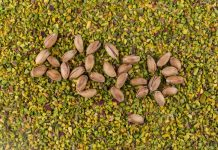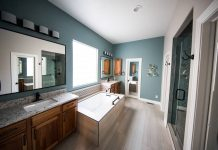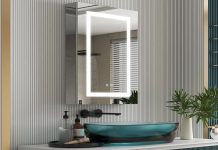Event venues who are looking for a solution that will amaze their visitors with a surface that is pleasant, green, and kind to the environment might think about installing artificial grass.
Around commercial buildings, music halls, community gatherings, amphitheaters, carnivals, festivals, and amusement parks, among other places, artificial grass may be utilized to create an inviting setting and ambience.
Why is it preferable to use artificial grass in event spaces?
The ecologically responsible choice is to use artificial grass.
As more and more customers look for ecologically friendly alternatives, many of them have discovered that a grass synthetic cousin, turf, is an appealing alternative to consider.
Water conservation, elimination of the need for pesticides, and decreased pollution caused by lawn upkeep are only some of the environmental benefits of artificial grass.
There are now drought conditions affecting many areas, particularly those with hot temperatures, and water restrictions have been put in place as a result. When natural grass is substituted with artificial turf, 55 gallons of water may be saved annually per square foot.
Guests will like the artificial turf’s appealing appearance
Artificial grass of the highest grade can convincingly mimic both the look and the texture of genuine grass.
It makes a cheery first impression and blends well with various forms of landscaping, both natural and manmade, to create exciting and original settings for special occasions.
The upkeep required for artificial grass is almost nonexistent
Although natural landscaping is often preferred by event-goers, it may be a pain to keep it looking nice for long periods of time.
The use of fertilizers, herbicides, and watering are all burdens placed on the environment that are alleviated by the use of artificial grass, which also creates an aesthetically pleasing and comfortable surface.
One of the most economical ways to landscape is to use artificial grass
Synthetic grass helps reduce total operating and maintenance expenses by conserving water, requiring less upkeep, and cutting down on the personnel costs that are connected with maintenance.
Installing, sculpting, keeping up with upkeep, and tearing down artificial grass is one of several possible options
When it comes to the use of artificial grass in event areas, the possibilities are almost limitless.
Synthetic turf is a low-maintenance alternative to real grass that can be shaped and sized to suit any installation (https://www.angi.com/articles/how-much-does-ar) without the need for seeding, laying sod, watering, or mowing.
Durable and long-lasting are two characteristics of artificial grass
The use of artificial grass is not only pleasant for large groups of people, but it can also resist strong foot traffic and continuous usage.
Many varieties of grass include advanced ultraviolet (UV) protection so that they may retain their resilience and color stability even in scorching environments.

The clean and environmentally friendly alternative to natural grass is artificial turf
When it rains or there is significant foot traffic, artificial turf does not get muddy or dirty, and it protects the grass from being damaged.
This helps to maintain event venues clean and green. It is safe to use, does not contain allergens, and effectively wards off insects and other unwanted guests.
The Installation Process of Artificial Grass
#1. Site evaluation
Knowing your place will give safety and assist prevent standing water hazards.
#2. Underground Hazards
Identify utility dangers. Underground electricity and water lines are included. Local utilities usually provide site evaluations to find these. Others can do this. Underground utilities may be hazardous, so avoid them.
#3. Drainage
Standing water might ruin your new outdoor space. Artificial grass drains well, but water must flow somewhere to avoid pooling.
Ensure you have well-draining soil or the depth to construct a drainage system. Click here for more information on drainage necessary in artificial turf areas.
Large roots and pebbles must be removed before laying the drainage layer for artificial grass. Before continuing with your project, you may need to remove them.
#4. Groundwork
Here’s where your outdoor grass job begins. As always, preparedness is crucial. The following stages will assure easy installation and long-term pleasure of your lawn project.
#5. Remove weeds
Inside your indicated area, remove vegetation and roots. You’ll want to prevent weeds from growing through the grass. Remove weeds and grass in this phase.
#6. Remove sod
You’ll need to remove dirt for drainage (if needed) and foundation fill. In any case, you’ll need to account for the depth of the artificial grass and its placement in respect to the natural landscape.
#7. Drainage
If your soil is hard and doesn’t drain well, you will need to add a drainage layer or system. For the drainage layer, individuals can either add an extra 6 inches of rock fill drainage or buy a synthetic drainage system.
The thickness of artificial grass drainage systems might vary and need extra processes. If you have a drainage problem while building your border (next part), allow water to flow through the border. Every 6 inches of the border should have a drainage gap.
What is Turf?
Turf is known as Artificial grass, synthetic turf, or fake grass, a type of surface material designed to look and feel like real grass.
It is made from various synthetic materials, including plastic, rubber, and nylon, and is commonly used in landscaping, sports fields, and other outdoor applications.
One of the main benefits of artificial grass is that it requires little maintenance compared to natural grass.
Unlike natural grass, which needs to be watered, mowed, and fertilized regularly, artificial grass only needs to be cleaned occasionally to remove debris and keep it looking neat.
Another benefit of artificial grass is that it is more durable than natural grass, which can become damaged or worn out over time.
This makes it ideal for high-traffic areas, such as sports fields or playgrounds, where natural grass cannot withstand heavy use. However, there are also some downsides to artificial grass.
One major concern is that it can get hot in direct sunlight, making walking on or playing on uncomfortable.
In addition, some types of artificial grass can be made from materials that are not biodegradable, which can have environmental implications.
Artificial grass can be a good option for certain applications, but it’s important to weigh the pros and cons before deciding whether it’s the right choice for a specific project.













